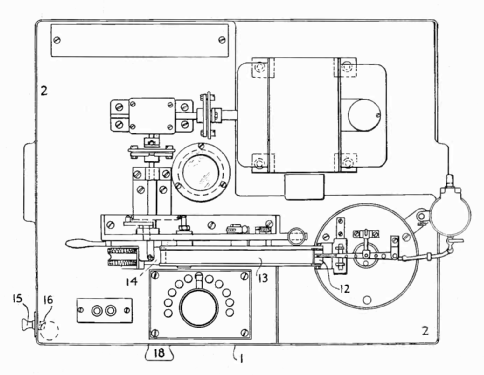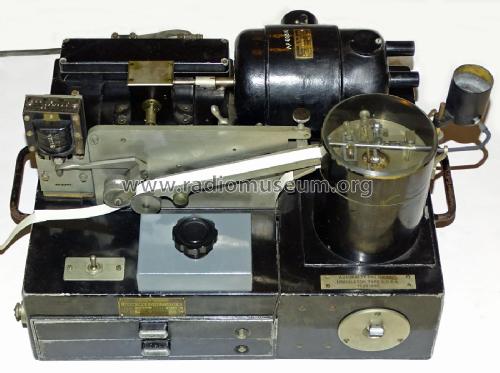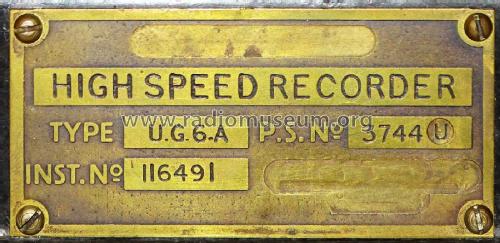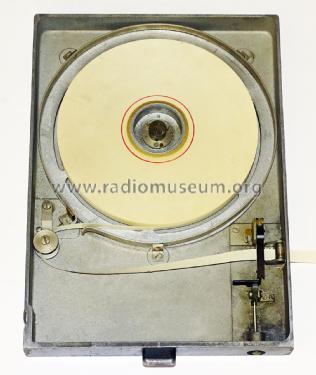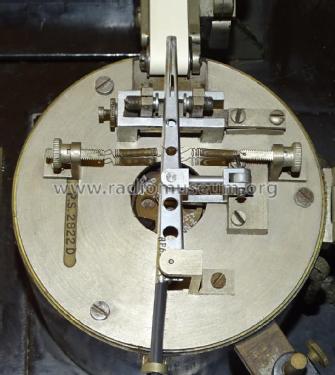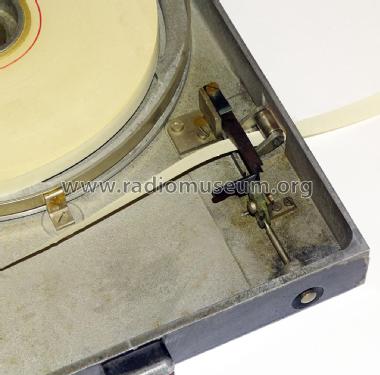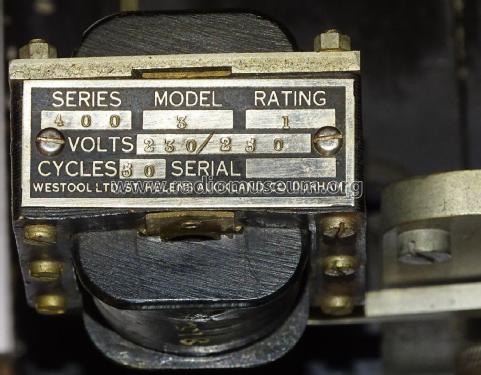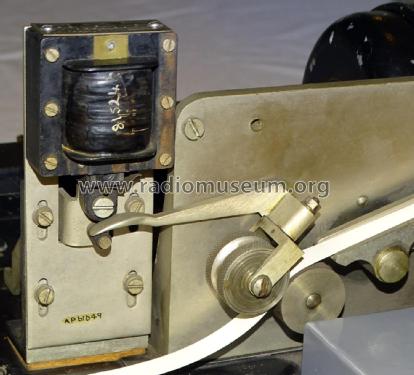High speed recorder (undulator) Type UG6A
Marconi's Wireless Telegraph Co. Ltd.
- Country
- Great Britain (UK)
- Manufacturer / Brand
- Marconi's Wireless Telegraph Co. Ltd.
- Year
- 1929 ?
- Category
- Morse-Equipment & TTY, RTTY, TDD etc.
- Radiomuseum.org ID
- 304037
Click on the schematic thumbnail to request the schematic as a free document.
- Power type and voltage
- Alternating Current supply (AC) / 110; 220; 220-240 Volt
- Loudspeaker
- - - No sound reproduction output.
- Material
- Metal case
- from Radiomuseum.org
- Model: High speed recorder Type UG6A - Marconi's Wireless Telegraph
- Dimensions (WHD)
- 400 x 268 x 335 mm / 15.7 x 10.6 x 13.2 inch
- Notes
-
The Marconi Type UG6A undulator was designed for the recording of high-speed machine-sent radio or line telegraph signals on 0.5 in (12.7 mm) wide paper tape ('slip') at a rate of up to 280 Bauds. The pen is fed with ink by gravity, and is driven by levers connected to twin moving coils of resistance 1000/1000 ohms or 20/20 ohms. The normal drive current for the 1000 ohm coils is 30 mA. In operation the tape is driven by an AC motor whose speed can be varied by a rheostat. In the UG6 model, the tape puller wheels are engaged and disengaged manually, while the UG6A is equipped with an AC solenoid which disengages the drive when energised. Both models have a lever for raising and lowering the guide trough to engage/disengage the tape with the pen.
The machine has two drawers for reels of paper tape, and an ingenious mechanism permits the changeover from one reel to the next without interruption of the signal recording. The tape in use is fed from the lower drawer, and when that is almost exhausted the start of a fresh reel in the top drawer is fed into the input guide chute on top of the old one. (Hence it is under the old tape on the writing platform). When the new tape has been drawn through the puller wheels, the old tape is cut without disturbing the flow by a fast pre-loaded spring guillotine operated by push button on the front of the drawer. The lower drawer can then be withdrawn for reloading (a catch on the left side of the machine prevents the upper drawer being drawn out with it), and the upper drawer drops gently down into its place.
Although the machine was initially intended for the recording of Morse signals up to about 330 wpm, it is a general-purpose variable-speed recorder of raw digital data and does not require any code synchronisation. For example, these machines proved useful at Bletchley Park for recording machine-coded signals for initial analysis, before it was understood what kind of system was being used to generate them.
- Net weight (2.2 lb = 1 kg)
- 24.1 kg / 53 lb 1.3 oz (53.084 lb)
- Author
- Model page created by Bruce Taylor. See "Data change" for further contributors.
- Other Models
-
Here you find 94 models, 92 with images and 17 with schematics for wireless sets etc. In French: TSF for Télégraphie sans fil.
All listed radios etc. from Marconi's Wireless Telegraph Co. Ltd.
Collections
The model High speed recorder (undulator) is part of the collections of the following members.

